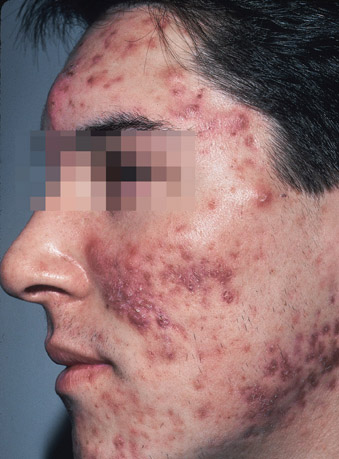Basal cell carcinoma (BCC) is type of skin cancer that found the most in human. There are about one million American diagnosed and an estimated 20,000 people who die from skin cancer or basal cell carcinoma worldwide each year. Basal cell carcinoma mostly appears on the face, ears shoulder and neck where the skin is easily exposed to sunlight or dust, X –ray treatment, low vitamins intake and some chemical may cause serious BCC. However, it can also appear on other parts of body such as the abdomen, leg, and scalp exposed to sun’s ultraviolet rays. Early diagnostic and treatment will help to reduce damage the skin and cause an ulcer known as a rodent ulcer. In some cases, contact with arsenic, exposure to radiation, open sores, lesions that do not heal, inflammatory skin conditions, and complications of burn scars, infection, vaccination, or even tattoos are contributing factors
Basal Cell Carcinoma Causes
- There is some people develops basal cell carcinomas by exposed to fiberglass dust and dry cleaning. Also, prior non-diagnostic X-ray treatment for skin conditions increased risk of both cancers.
-
- Several studies have shown an association between cumulative ultraviolet exposure and risk of basal cell carcinoma, although the magnitude of risk conferred has been small.
-
- There is also other non-ultraviolet environmental exposures that have been associated with increased risk of basal cell carcinoma include ionizing radiation, high dietary energy (especially fat), low intake of vitamins, and various chemicals and dust. Exposure to arsenic predisposes to multiple basal cell carcinomas.
- Lately UK has also been reported that 2% of such tumors could be associated with exposure to radon.
- Some research found squamous cell carcinomas in people exposed to insecticides, herbicides, fungicides and seed treatments as well petroleum products, grease, and several other exposures.
Basal Cell Carcinoma Prevention
- If you would like to get tan, do so slowly, starting at 15 minutes a day, max. Work up to greater exposure, but only if there is no damage, not even slight damage, to your skin. Basal cell carcinoma tends to be more virulent among people who get most of the tanning from tanning beds.
- The most important nutrients for preventing basal cell carcinoma are antioxidants supplement and vegetable. The main principal is using n-acetyl cysteine (NAC), selenium, and vitamins C and E. NAC works synergistically with vitamins C and E to protect the “watchdog” gene p53 that keeps skin cells with damaged DNA from continuing to grow and multiply. Selenium and vitamin E help the skin make the “super-antioxidant” glutathione, and another antioxidant, alpha-lipoic acid, will help keep glutathione from being broken down in the liver. Alpha-lipoic acid is especially important for people who work or exercise outdoors.
- What else can you do to relieve and prevent basal carcinoma? Number one, wear sunscreen or sun block lotion. The recommendation used to be to use at least SPF-15 on sun-exposed skin in the summer. Now more doctors tell their patients to use a stronger (higher number) sun screen any time of year.
Basal Cell Carcinoma Treatment
Treatment of BCC is depending on the size, depth, and location of the basal cell cancer. Here are treatments options that available include:
MOHS surgery
Radiation therapy
Cryosurgery (freezing cancer cells)
Topical chemotherapy
Photodynamic therapy.
Treating Basal cell with MOHS is by far the best way to prevent the Basal cell cancer from coming back (about a one percent chance of returning) while other types of basal cell treatment are less effective (about a ten percent return rate). MOHS is a surgical procedure that involves removing tumor tissue layer by layer. Each of the layers of removed tissue is then scanned for cancer cells under a microscope









